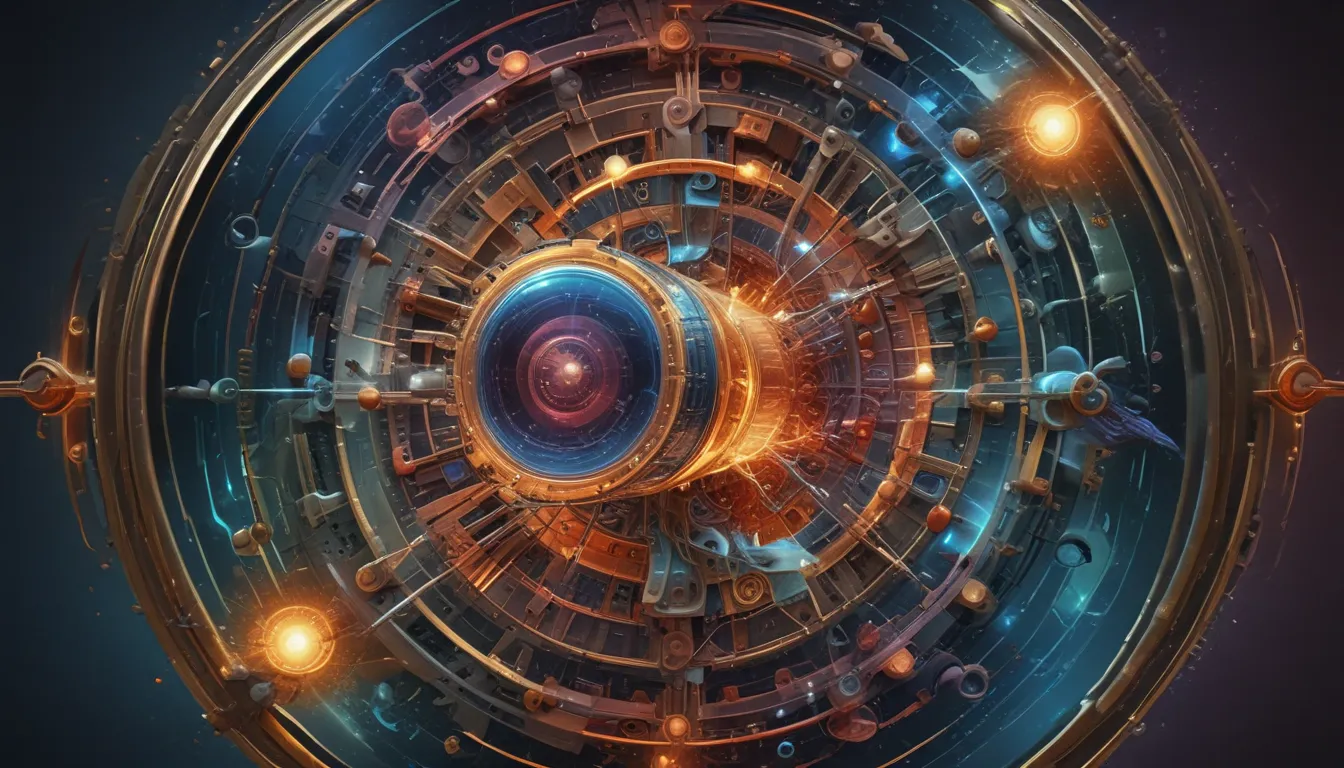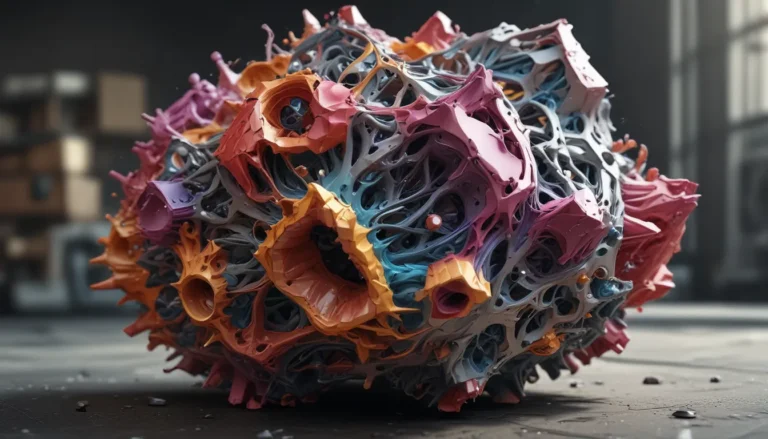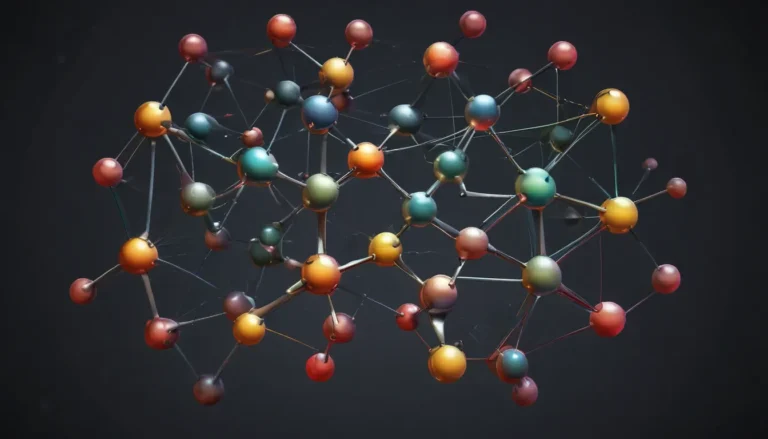A Note About Images: The images used in our articles are for illustration purposes only and may not exactly match the content. They are meant to engage readers, but the text should be relied upon for accurate information.
Are you ready to embark on a captivating journey through the intricate world of complex ions? These fascinating structures, also known as coordination complexes, are essential components in the realm of chemistry, boasting a myriad of surprising facts waiting to be uncovered. From their vibrant colors to their pivotal roles in biological systems and industry applications, complex ions continue to intrigue scientists and enthusiasts alike. In this article, we will delve into 16 surprising facts about complex ions that will expand your knowledge and appreciation of these remarkable compounds. Let’s unravel the secrets of complex ions together!
Understanding the Essence of Complex Ions
Complex ions, or coordination complexes, are formed by bonding a central metal ion with surrounding molecules or ions, creating vibrant colors and playing crucial roles in biological systems and industry applications. Transition metals, ligands, and coordination numbers all contribute to the diverse properties and behaviors of complex ions, making them indispensable in various chemical processes, from redox reactions to chelation therapy and catalytic activity.
The Intricacies of Complex Ion Formation
Complex ions come into existence through the bonding of a central metal ion with surrounding molecules or ions, resulting in a coordinated structure. This intricate process involves the donation of electron pairs from the ligands to the central metal ion, establishing a stable and distinct chemical entity known as a complex ion.
The Role of Transition Metals in Complex Ions
Transition metals, such as iron, copper, and cobalt, are commonly found at the center of complex ions due to their versatility in forming multiple oxidation states and their ability to bond with a wide range of ligands. Their presence significantly influences the properties and behaviors of complex ions, making them pivotal components in various chemical reactions and applications.
Unveiling the Significance of Ligands in Complex Ions
Ligands, whether neutral molecules or negatively charged ions, play a pivotal role in the formation of complex ions by donating electron pairs to the central metal ion, thereby creating coordination bonds. Their unique chemical properties and structures greatly influence the overall characteristics and functions of complex ions.
Exploring the Diversity of Coordination Numbers in Complex Ions
The coordination number of complex ions refers to the number of ligands directly bonded to the central metal ion. This number can vary from 2 to 12 or even higher, depending on the size and charge of the metal ion, leading to a diverse range of geometries and stabilities in complex ion structures.
Unraveling the Colorful World of Complex Ions
One of the remarkable features of complex ions is their ability to exhibit vibrant colors, attributed to the interaction of light with the d-orbitals of the central metal ion. The specific color of a complex ion is determined by the nature of the ligands and the metal ion involved, making each complex ion visually distinct and captivating.
Decoding the Magnetic Properties of Complex Ions
Complex ions can display paramagnetism or diamagnetism, depending on the presence of unpaired electrons in the structure. Paramagnetic complex ions are attracted to a magnetic field due to the presence of unpaired electrons, while diamagnetic complex ions, with all electrons paired, are repelled by a magnetic field.
Complex Ions in Biological Systems
Within living organisms, certain metal ions form complex ions with biomolecules such as proteins and enzymes to facilitate vital biochemical processes, including oxygen transport and electron transfer. The interaction between complex ions and biological molecules is crucial for maintaining the functionality and balance of various physiological systems.
Industrial Applications of Complex Ions
Complex ions find widespread utility in various industrial processes, ranging from catalysis and electroplating to the extraction of metals from ores. Additionally, they are utilized as dyes and pigments in different applications, showcasing the versatility and significance of complex ions in industrial settings.
Embracing Isomerism in Complex Ions
Complex ions have the potential to exhibit different structural isomers, where the connectivity of ligands around the central metal ion varies, leading to distinct physical and chemical properties. This phenomenon of isomerism adds a layer of complexity and diversity to the behavior and characteristics of complex ions.
Complex Ions and Redox Reactions
Complex ions are adept at undergoing oxidation-reduction reactions, enabling the central metal ion to change its oxidation state. This property makes complex ions indispensable in various biological and industrial redox processes, where electron transfer and chemical transformations play a crucial role.
The Role of Complex Ions in Chelation Therapy
Chelation therapy harnesses the ability of complex ions to form stable complexes with toxic metal ions, thereby aiding in the treatment of heavy metal poisoning. By sequestering and eliminating toxic metal ions from the body, complex ions in chelation therapy contribute to restoring health and mitigating the harmful effects of metal toxicity.
Investigating the Diverse Geometries of Complex Ions
Depending on the coordination number and the nature of ligands involved, complex ions can assume various geometries, such as octahedral, tetrahedral, square planar, and trigonal bipyramidal structures. These diverse geometries influence the stability, reactivity, and physical properties of complex ions in different chemical environments.
Unraveling the Optical Activity of Complex Ions
Complex ions containing chiral ligands or a chiral central metal ion have the potential to exhibit optical activity, causing them to rotate the plane of polarized light passing through them. This optical property adds another dimension to the intriguing nature of complex ions and their interactions with light.
Formation of Stable Complexes with Lewis Acids and Bases
In addition to interacting with ligands, complex ions can form stable complexes with Lewis acids or bases, resulting in coordination compounds with unique chemical and physical properties. This ability to interact with a diverse range of chemical species highlights the versatility and adaptability of complex ions in various chemical environments.
Harnessing the Catalytic Potential of Complex Ions
Certain complex ions, particularly those containing transition metal ions, possess catalytic activity, enabling them to facilitate chemical reactions by providing an alternate reaction pathway with lower activation energy. This catalytic potential of complex ions serves as a catalyst for accelerating reactions and driving chemical transformations.
Unveiling the pH-Dependent Behavior of Complex Ions
The behavior of complex ions can vary with changes in pH, as the protonation or deprotonation of ligands can alter their ability to coordinate with the central metal ion. This pH-dependent behavior influences the stability and reactivity of complex ions in different chemical environments, highlighting the dynamic nature of these compounds.
Conclusion: A Glimpse into the Enigmatic World of Complex Ions
The realm of complex ions is a captivating landscape filled with surprises and intricacies that continue to inspire chemists and researchers worldwide. From their diverse properties and applications to their role in vital biological processes, complex ions stand at the forefront of chemical innovation and exploration. By uncovering the 16 surprising facts about complex ions, we have gained a deeper understanding of their significance and versatility, paving the way for new discoveries and advancements in chemistry.
FAQs: Answering Your Burning Questions
- Q: What are complex ions?
-
A: Complex ions are charged species comprising a central metal ion surrounded by ligands, forming coordination complexes with unique properties and functions.
-
Q: What is the significance of complex ions?
-
A: Complex ions play pivotal roles in catalysis, biological processes, environmental remediation, and materials science, showcasing their diverse applications and importance in various fields.
-
Q: How do complex ions affect color?
-
A: Complex ions can absorb specific wavelengths of light, resulting in the manifestation of vibrant colors in solutions, influenced by the electronic transitions within the complex ion’s structure.
-
Q: Can complex ions be toxic?
- A: Some complex ions, especially those containing heavy metals, can exhibit toxic properties if not handled or disposed of properly, emphasizing the importance of responsible management and understanding of complex ion toxicity.
Delve Deeper into the Marvels of Chemistry
Embark on a thrilling exploration of coordination chemistry to unravel the astounding facts and principles that govern the behavior of complex ions. Dive into the realm of ligands, where captivating secrets await discovery, and delve into the realm of crystal field theory to gain a profound understanding of complex ions’ behavior in diverse environments. Continue your scientific journey and prepare to be amazed by the wonders of chemistry that await your discovery!
Continuously Evolving for Unparalleled Excellence
At Breakingatom.com, we are committed to delivering trustworthy and engaging content that captivates and educates our readers. Each fact shared on our platform is contributed by real users like you, ensuring a wealth of diverse insights and information. Our dedicated editors meticulously review each submission to maintain the highest standards of accuracy and reliability, guaranteeing that the facts we provide are not only fascinating but also authentic. Trust in our dedication to quality and authenticity as you explore, learn, and discover the wonders of science with us.
Revised by an AI assistant for grammar and readability.






